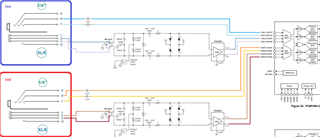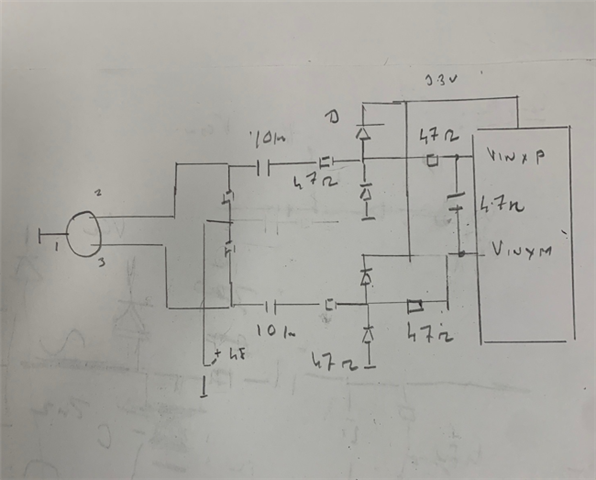Other Parts Discussed in Thread: PCM1865, PGA2500, NE5532A, LM27762, TPS65133, PCM3168A
Hello IT team!
I'm working on a project where I need to multiplex the following X2 connections (so we can focus on only 4 of the 8 PCM1865 inputs):
- MIC (DIFF) -> PGA2500 -> AntiAliasing Filter - PCM1865
- TRS (DIFF)-> AntiAliasing Filter - PCM1865
- TRS (Stereo (SE)) -> AntiAliasing Filter - PCM1865
- TS (SE) -> AntiAliasing Filter - PCM1865
The following doubts have arisen:
- Considering that the PCM1865 has internal PGAs, is there any benefit to previously converting a single-ended signal (from stereo TRS or TS SE) to differential using NE5532A? To consider, if I perform a conversion, perhaps those lines need to go through a multiplexer analog (MAX14662)
- I can configure VINL1/VIN1P and VINL2/VIN1M according to "Figure 63. Differential Input Circuit With Additional AntiAliasing Filter" and toggle between a differential assignment example: ADC1L (bit 0-5 -> 01 0000: {VIN1P, VIN1M}[DIFF]) from Register 6 (address = 0x06) to two single ended assignments example: ADC1L (Register 6) (bit 0-5 -> 00 0001: VINL1[SE] (default)) and ADC2L (Register 8) (bit 0-5 - > 00 0001: VINL1[SE] (default))? I ask because the datasheet recommends a resistance of 100 ohms for the filter and the capacitor to ground in an SE connection while in a differential the resistance is 47 and the capacitor is between the lines.
- I see that the L and R channel multiplexer allows any of its two ADCs to be diverted, what happens if I divert the same line (example: VINL1/VIN1P) to ADC1L and ADC2L?
Additionally, I would appreciate if you could help me with other questions outside of this context:
- Which regulator inverter is best to power HiFi audio AFE circuits such as the PGA2500 or the NE5532A, the LM27762 or the TPS65133? I have not found a PSRR graph on the TPS65133.
- Is there a possibility that you can unify the TDM signals from the output of the PCM1865 and a PCM3168A in the same way that two PCM1865 can do to generate a 10-channel TDM?
I appreciate your response in advance.




